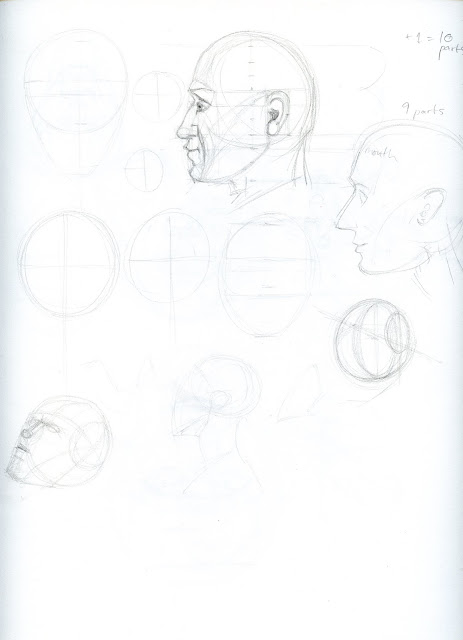 |
| Hmmm.... |
"Our use of the term 'competencies,' rather than 'standards' or 'skills,' is intentional....We define a competency as 'an underlying characteristic of an individual that is causally related to effective or superior performance'. These characteristics include enduring motives, traits, self-concepts, values, knowledge, and skills that can be assessed and differentiated....The expectation is that teachers and their developers will be able to use these competencies within a competency-based learning approach..., in which users will be able to demonstrate and advance against definitions of mastery and get rapid, meaningful assessment along with differentiated support." (p.7)
“More important than a technical definition is the purpose of blended learning—specifically, why its adoption as an instructional modality is important for the future of learning. We believe that blended learning is a powerful way to differentiate and personalize instruction, as well as to help move away from time-based models of achievement towards competency-based ones. Blending is a strategy for helping teachers achieve what they strive to do every day—deeply understand and enable each student they work with to reach the very highest levels of educational mastery.”
“The purpose of blended learning is more important than the technical definition!”
-- Stacy Hawthorne’s Powerpoint on blended learning (Slide 5)
Blended learning as an academic concept is new to me. To summarize my understanding of it based on the articles I’ve read over:
Blended learning is the combination (hence, blending) of brick-and-mortar classroom learning with web-based learning. This does not merely mean using online tools like Google Slides, but incorporating web-exclusive content along with having traditional teaching in a classroom. Instruction shouldn’t be one-size-fits-all. We as instructors must be flexible in order to meet our students’ needs. We can revamp our curricula using different strategies which offer students more flexibility with their coursework. And the purpose of incorporating these different modes of instruction is to encourage student success. School districts, single schools, and individual teachers can apply a “blended” structure to their curricula.
I'm completely on board with giving our students multiple ways to access classroom content. I'm not opposed to giving our students flexibility with their learning experience. However, I need to learn more before I jump wholeheartedly on board with "blending learning" as a concept.
I came across Paul Curtis' article on the blog Getting Smart entitled
Befuddled by Blended Learning. He says that the flaw with the discourse surrounding "blended learning" is that it doesn't push for concrete, measurable outcomes regarding the improvement of education. Whether or not this is true, again, I will have to verify with more research:
“...[W]hen I say it’s time to retire the term 'blended learning,' it doesn’t come from a fear of technology or a failure to understand the power technology can play in improving student learning. I oppose the term blended learning not because it’s a bad idea to leverage computers to improve student learning, but because it fails to clearly chart a path for educators in establishing a more meaningful model for student learning. In fact, conversations about blended learning can even become a distraction to the more significant conversations our schools need to be having and typically produces instructional approaches poorly aligned to what’s required for students to be well prepared for life outside of school."
When Stacy Hawthorne says in her presentation “The purpose of blended learning is more important than its technical definition,” I think…wait. Hold it right there. Technical definitions are important. It’s not that we are placing artificial constraints on abstract concept, but it’s important that we get our words clear so we’re all on the same page. She says later in her presentation:
“Increasing student opportunities to engage with technology – such as teachers using flipped classroom strategies, a school computer lab, and computers using digital curriculum in the classroom… don’t reach the full potential of blended learning.” (Powerpoint Slide 6)
Ok…then what
does??
But, again, I'm largely ignorant of this topic, so my criticisms may not be entirely fair. Hawthorne admits that the field of study surrounding blended learning is very young, and therefore still developing. If the incorporation of tools like Brightspace into the classroom qualifies as blended learning, then I give a wholehearted YES! that blended learning is a useful strategy.
In what ways has our blended learning approach been effective in THIS class?
This class on Instructional Technology has used a combination of in-class discussions/lectures and online self-guided learning. We’ve been given resources on Brightspace to supplement the material we cover in class. Brightspace has a discussion page that we can use to connect with each other online, and we also have a Twitter hashtag to share our blog posts. Reading others’ blog posts supports our learning of the concepts we cover in class. Once or twice, we’ve refrained from meeting in class at our usual Thursday time. During that time, we are expected to stay home (or a coffee shop, the library, anywhere) to go over the materials posted online at our own pace.
I’ve loved keeping up with this blog. It’s been a lot of work every week, but I feel good looking back over all the posts I’ve written. The most effective part of the class which could supposedly fall under the category of “blended learning” is the self-guided Major Project. I was given a set of guidelines by my professor, and I had to set learning goals for myself in a domain I close. Then, I would be required to keep track of my progress and post updates on my classroom blog. I think the blended learning experience with this class could be improved if everyone would be encouraged to comment on each others' tweets. I think people are afraid to be the only one commenting for some reason. It's difficult to have a full and meaningful discussion on Twitter, though.
In the future...
I will have to read more about blended learning and the surrounding discourse to develop a more informed opinion on the topic.


















































